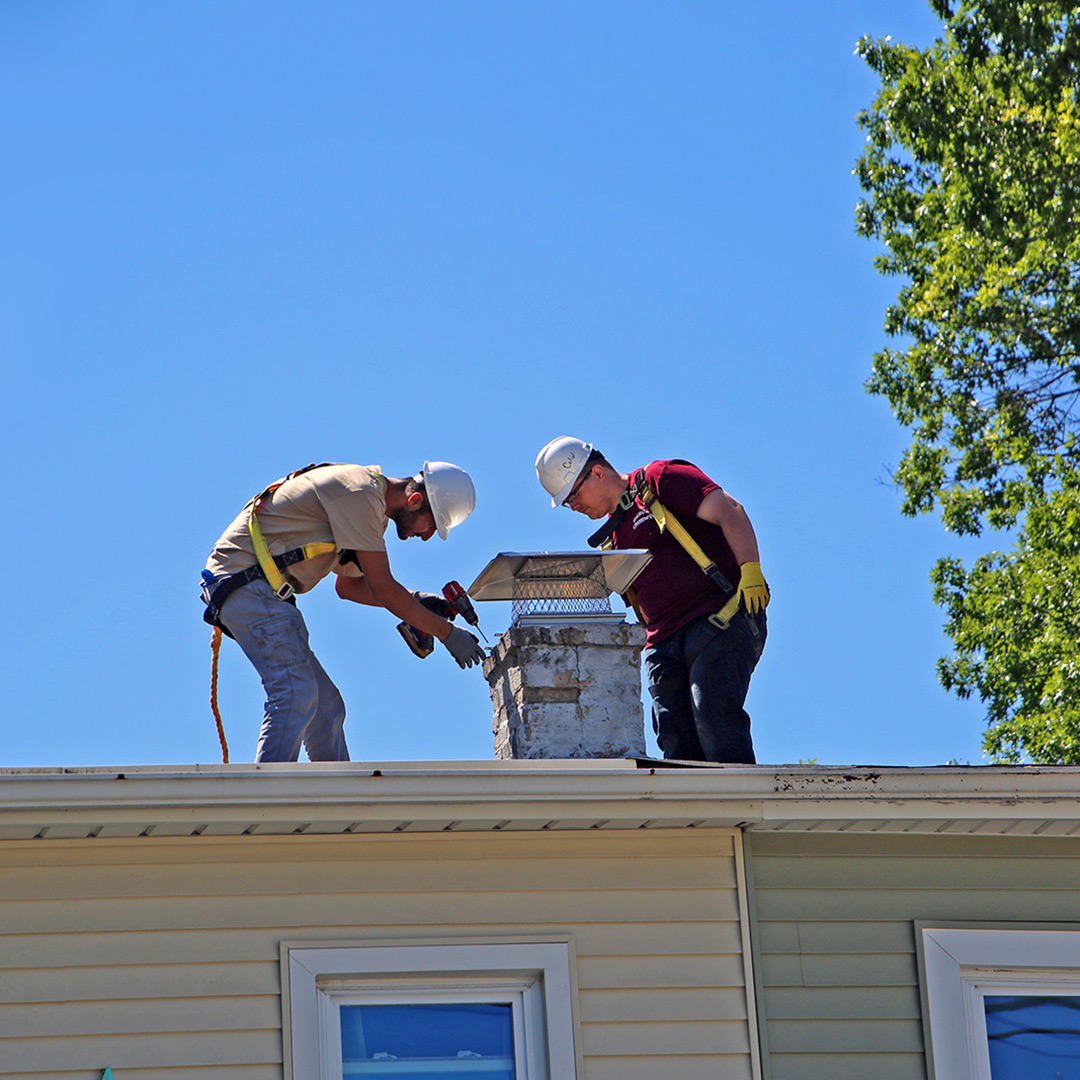The Top Causes of Winter Chimney Leaks
It’s winter, and you are enjoying the warmth and comfort your fireplace provides. So, as you are curled up with family, maybe your pets in front of the fireplace, there is more than meets the eye. Your chimney could be leaking, and that is something that can’t be ignored. Why? Because there can be extensive damage to your chimney, roof, and more. Let’s take a look at the top causes of winter chimney leaks.
 Hat’s Off to Your Chimney
Hat’s Off to Your Chimney
If your chimney lacks a chimney cap, then there is nothing to stop rain, snow, and hail from entering your flue. Moisture is the number one enemy of a masonry chimney. It can crack brick and wear away mortar. If your chimney liner has any flaws, then it’s not a matter of if your chimney will break down, but when. Adding a chimney cap gives you extra protection from moisture, even in the winter.
A Crack in the Chimney’s Crown or Chase Cover
Cracked chimney crowns are one of the more common causes of a chimney leak. Your chimney’s crown is a concrete slab at its top that slants slightly to allow water to drain away from the flue. When a chimney crown cracks, it will enable water to migrate all the way to the bottom of the chimney. When the water in the chimney’s bricks freezes in winter, it expands and causes the bricks to expand with it; when the temperature rises above freezing, the bricks contract. The repeated freeze-thaw cycle will cause your chimney’s bricks to break down and display an effect called spalling. What is that? Spalling is when your bricks start to chip and break; it can be spotted by the characteristic white powder that forms on the outside of your bricks. By the time you notice spalling, it can be too late. If it’s been a substantial amount of time since you had your chimney services, then you need to have it inspected by a qualified chimney sweep service, even in winter. You won’t be able to notice a cracked crown from the ground, so it’s imperative to have your chimney inspected.
A chase cover is standard to factory-built fireplaces and is a flat piece of metal with a hole to allow the flue through. When there is a crack or gap in a seam, leaks can occur, which is just as damaging as a cracked crown with masonry fireplaces.
Damaged Flashing
A chimney flashing is a thin piece of metal or another durable material, and its purpose is to protect water from getting into your roof joint. Chimney flashing goes where the roof and chimney meet. As indicated, if you have a damaged chimney flashing, it can allow water to penetrate your chimney and your roof as well.
 Condensation, It’s a Gas
Condensation, It’s a Gas
Condensation is more common in winter and can wreak havoc on your gas-burning fireplace chimney. If it lacks a proper liner, condensation can form and leak right through to the chimney and into your walls. Toxic black mold can build up around your leaking chimney and jeopardize your family’s health.
Allow Mercer County Chimney Services Can Repair Your Leaking Chimney
Do you suspect your chimney is leaking? If you reside in the greater Mercer County area, including Hamilton, Lawrenceville, Chesterfield, and Allentown, and need a certified and experienced chimney sweep service to maintain your repair your chimney’s leak, call 609-802-5288 or fill out our simple contact form, one of our chimney specialists will gladly set a time when our team of chimney technicians can come to your home.


